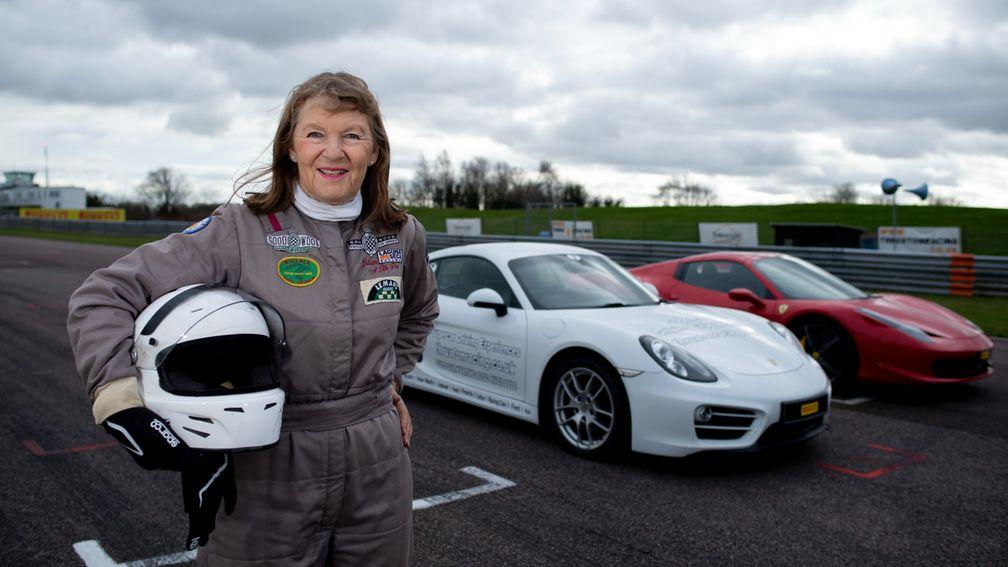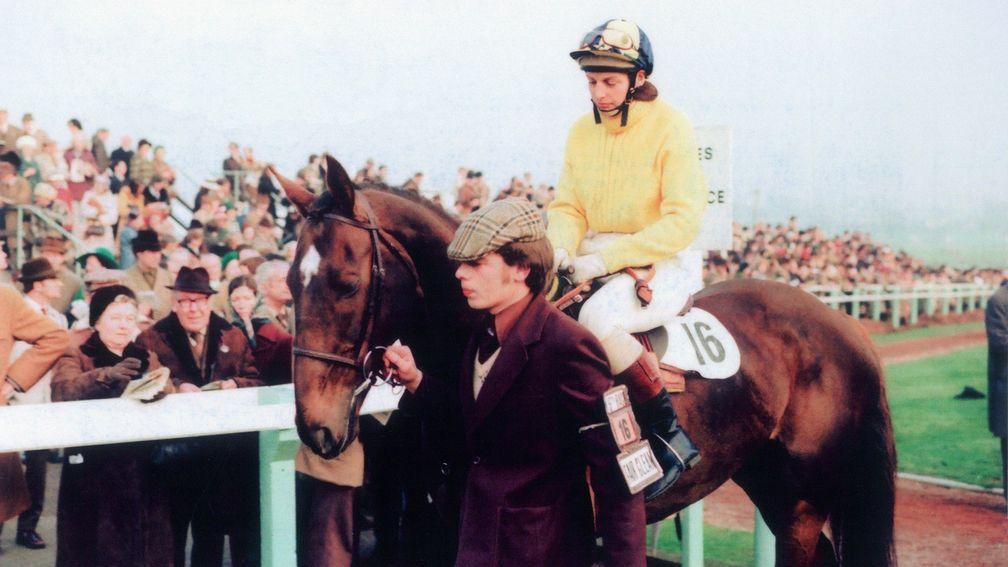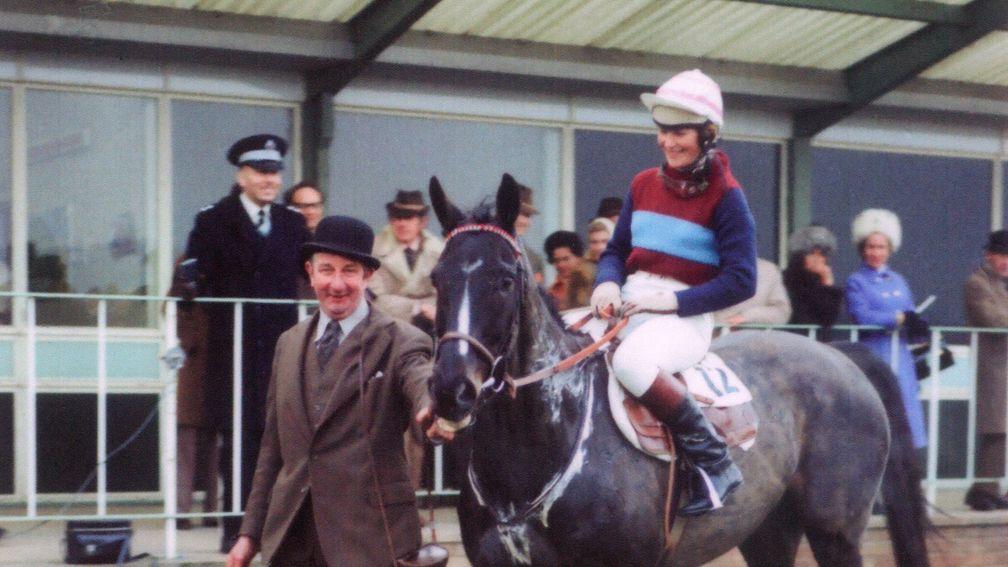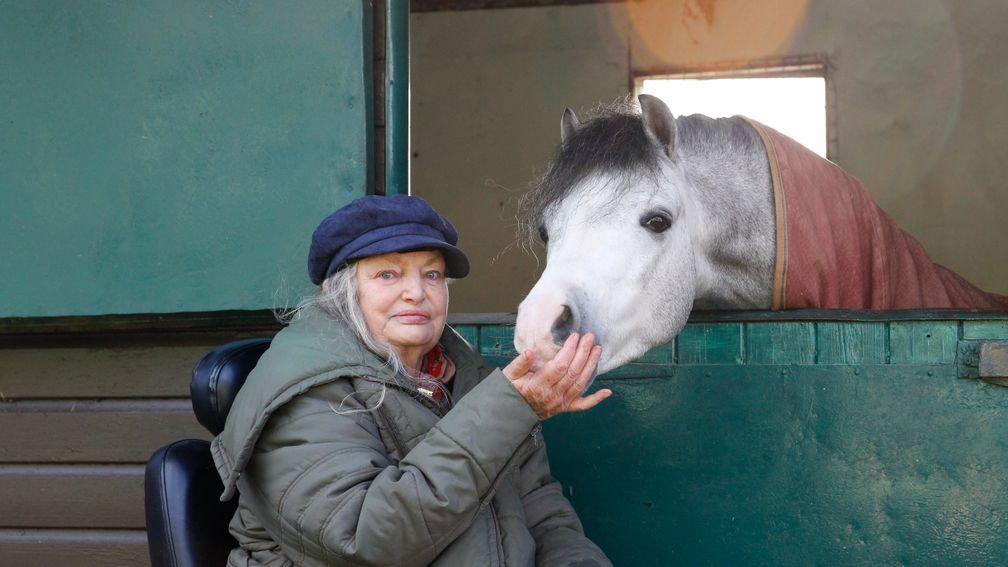'People wanted me to get buried' - meet the festival's first ever women jockeys
Richard Austen talks to Jenny Stamp and GC Gillian about the events of 1976

This was originally published on Saturday for Members' Club Ultimate subscribers as part of The Roar, our daily countdown to Cheltenham. The Roar, featuring our Festival Legends series, celebrity racing fans and tipping advice, is part of a fantastic line-up of premium Cheltenham features over the next two weeks. Click here to sign up for Members' Club and receive the Ultimate Daily every evening, select 'Get Ultimate Monthly' and enter code CHELT22 to get your first month for just £9.99.
From modern-day celebrities Rachael Blackmore and Bryony Frost, there is a line of achievement at the Cheltenham Festival which stretches back to the likes of Nina Carberry and Katie Walsh, to Gee Armytage and Caroline Beasley. And that line stretches further still. This is about the women who initiated it.
With the Sex Discrimination Act passed late in 1975, the Jockey Club announced on January 20, 1976 that women could apply for professional and amateur licences to ride over jumps, and one week later, with Colonel Piers Bengough and Major Ewan Cameron interviewing candidates, the first four were issued.
The first was to Sue Horton and, hitting a note which some coverage would pursue for many years afterwards, the Daily Telegraph described her as "leading point-to-point rider among the ladies five times. An extremely pretty blonde, she rides almost as short as Andy Turnell and will add a touch of style to the hunter chase scene".
If some believed that women riders would be merely an adornment, they should have been swiftly persuaded otherwise. With trainer's wife Muriel Naughton having ridden her 33-1 shot Ballycasey into sixth of eight in a handicap chase at Ayr on January 30, hunter chases at Stratford and Warwick on February 7 and 17 were won by the 22-year-old twins Diana and Jane Thorne. For her win on Ben Ruler at Stratford, Diana caught her father, the celebrated John Thorne, in the final strides.
The attendant hullabaloo had died down considerably by the Cheltenham Festival, but in the National Hunt Chase on the first day the rider on Fair Gleam was Mrs Jenny Stamp.
"My first thoughts were to be overwhelmed by the amount of people there, the amount of people to get through to get anywhere," the history-maker recalls, which was an observation with practical implications as the changing area allotted to her was a caravan in the car park. There she was left entirely to her own devices, without any assistance, but, she affirms, "I was just pleased to be able to do it."

Stamp ran a livery business with her husband Christopher and had tasted success in point-to-points. Now she wanted to race on a more expansive plain. "As soon as I could [get a licence under rules], I did," she relates, but extending that to the festival was not her idea.
"I was quite miffed with the owners because they were desperate to go and have a runner at Cheltenham, whereas there was a hunter chase up in Newcastle that I thought she had a better chance in and could possibly even win."
The pair had already competed in hunter chases at Nottingham and Market Rasen, finishing fourth and second. In the latter it was by a length having made most until the final fence.
At Cheltenham, one day after the rider's 30th birthday, they were 25-1, but on walking the course Stamp found nothing intimidating about it and was not beset with any great nerves. "I don't think it was any worse than a normal raceday. I tried to treat it just as another race."
Did she feel that she was going out there not just for herself, but representing her sex? "No. That didn't make any difference to me at all."
Speaking to Anne Alcock for her 1978 book '"They're Off!" The story of the first girl jump jockeys', Stamp described the early stages of that 22-runner National Hunt Chase: "It was like a rugby scrum; they set off like idiots, bumping and boring."
She now observes: "It was a typical amateurs' race in that they set off like hell, which didn't suit my mare at all. She wanted to dictate and used to sulk if she got taken off her feet. And then she just made one of those silly novice mistakes at one of the fences [the 11th] going down the back."
Three of the first four horses ridden by women at the festival were fallers and Fair Gleam was the first. "It's just one of those things. It's a part of racing, isn't it?" says her jockey.
Six of the men in her race also fell and three were brought down, with several sustaining injuries, as did Stamp. "It was only a broken collar bone," she explains, but Stamp's final experience of the 1976 festival was leaving it for Cheltenham General Hospital in a crowded ambulance.
The women riders at that festival were not finished. The final race was the 3m1f Cathcart Champion Hunters' Chase, carrying more prize-money than the 4m Foxhunter, and at 9-1 it featured Stanhope Street, who had been one of Britain's top pointers and hunter chasers two years earlier. There had been shockingly little trace of that from him in 1975 when switched to a professional yard, that of Tim Forster, but he lined up for the 1976 Cathcart following two pointing wins under a new trainer.
"I was training and rehabbing anything from children's ponies to hunters to point-to-pointers. And Stanhope Street came down and seemed to love it," reports GC Gillian, who was then riding aged 27 as Gillian Fortescue-Thomas.

"The owner had always wanted to run at Cheltenham, so I had to take a licence out. I wasn't one of these feminists rushing up to the Jockey Club. I was just a regular rider for the horse, we got on well, and he obviously didn't want a change of jockey."
A good deal more attention was apparently paid to her than to Stamp, probably because although Gillian had ridden in points at an early age, she had then won greater acclaim at venues such as Brands Hatch and Silverstone as a member of the Ford Works Team of professional motor racing drivers.
Gillian believes there is an affinity between riding a racehorse and driving a racing car, and points out that her friend Stirling Moss started off showjumping as a child.
"The style of his driving was relaxed with smooth, soft hands, and he'd learned to communicate through the reins as you have to through a steering wheel. The balance and feel and anticipation of weight transfer are very similar."
In another respect, however, her participation in the two sports provided very different experiences: "I'd been motor racing on level terms and it wasn't a big deal for me. I said, 'What's all the fuss? Girls have been allowed to motor-race for years.'"
She tried to avoid motor races confined to women and in horseracing her strong advice, seldom followed, was to "think of jockeys as jockeys and racing drivers as racing drivers, and whatever gender they are, just judge them on their results."
While some people in racing were very nice to her, from others she detected that "there was an undertone of you're either a freakshow, or you shouldn't be here or we don't want you here, it's not a girl's sport".
At Cheltenham, Gillian sums up, "Half the people wanted me to do well and half wanted me to get buried at the first," and while the latter did not happen, her race did not begin well.
"As we cantered down to the start, there were white rails, crowds, a Tannoy and I nearly died because he switched off, he absolutely went dead on me." Gillian's belief is that this stemmed from Stanhope Street's unhappy memories from the previous season.
"He wasn't the same horse that I had at the two point-to-points. It was awful. No-one else knew but me. I think the form book said we were tailed-off after a circuit. There was just no sparkle in him at all. The obvious thing would be to try to wake him up with a smack around the backside, but I knew if I did that would be an end of it because he'd obviously had that the year before.
"So I just sat there, getting more and more tailed-off and trying to just encourage him and talk to him. I kept on asking him whether he'd like to have a go at racing and he said, 'Not on your life.' I was just niggling at him and I thought I'll have one more go at the top of the hill and if that doesn't work I'm going to pull him up and walk back very slowly, maybe even dismount, to show people he wasn't right. But we were so tailed-off nobody would have noticed; everyone would have gone to look at the horses for the next race or to the bar.
"Anyway, at the top of the hill my last effort to wake him up seemed to work. With the speed I came through the field, it was more embarrassing than being tailed-off. I touched his backside a bit going up the straight because he was up for it then, he was back to being a racehorse, and we got beaten by Mickley Seabright, who to be honest I think probably would have won anyway, but we came second.
"A man came up and poked me on the thigh as we were walking back to the winner's enclosure and he said if I hadn't been so nervous I might have won. He'd obviously put his money on it. And I thought, 'If only you knew.'
Gillian's one abiding regret from that day, though, is not the race. Pressures of her farming and livery business meant that she travelled to Cheltenham on raceday. "One thing I would have absolutely loved to have done and would still love to do is to ride out early in the morning at Cheltenham. It's funny, it's really stuck in my mind that I never did that."
Neither of the first two women jockeys at Cheltenham rode at the festival again, but her three wins and three seconds from six hunter chases on Stanhope Street that season (there were also three wins from three starts in points) made Gillian the first champion among female jumps riders under rules. Not that she was given much recognition for it. She did, however, meet the Queen Mother in the royal box after becoming the first woman to win a jumps race at Ascot.
Another introduction she remembers well took place at Wincanton the following season when she was changing in a corner of the first aid hut and one of the male jockeys was brought in. "He was muddy and bloody, and the first aid man said, 'Don't worry, love. He's unconscious and we've seen it all before, so you just carry on.' It was great."
Gillian was nevertheless an early campaigner for better women's facilities. She eventually returned to motorsport, still races cars and is in demand as an instructor of novice racers.

Stamp was back raceriding within three weeks of her Cheltenham fall and Fair Gleam was one half of her double soon afterwards at the South Wold point-to-point, at her local track in Lincolnshire. She also rode in hurdle races against professionals, and reports: "There was a bit of banter, but on the whole they treated you pretty good. I found if you stood up for yourself, if they gave you a bit of a bollocking and you gave them one back, that was fine and it was soon forgotten."
Her riding career came to a brutal end, however, as the result of a fall at the South Wold in April 1977. Stamp continued to work with horses and ponies, but she has done so while being paralysed from the chest down. "It's something you have to accept," she states. "I enjoyed what I did and I wouldn't change it."
Read more on the Cheltenham Festival:
Best bets, big prices, Lucky 15s and more for next week's Cheltenham Festival
Why Ally McCoist got fined by Rangers every Cheltenham Festival

Join Racing Post Members' Club for just £9.99 for your first month!Members' Club is the only subscription racing fans and punters need in order to stay informed and make smarter betting decisions. Features include early access to the Racing Post digital newspaper, exclusive news and interviews, premium tips and form study tools to assist with betting. Head to our subscription page here, select 'Get Ultimate Monthly' and enter code CHELT22!
Published on inFeatures
Last updated
- Captain Marvel: how a modern master of Cheltenham and a genuine pioneer executed one of the shocks of the year
- 'We’re delighted with how it's going' - joint-trainers prepare for exciting year after Flat string is doubled
- 'We’ve had to work hard this sales season' - Kennet Valley seeking to build on success with biggest string
- Alastair Down's archives: the great writer recalls Coneygree's glorious victory in the 2015 Cheltenham Gold Cup
- Kauto Star: the extraordinary talent who became the benchmark for sheer undiluted quality
- Captain Marvel: how a modern master of Cheltenham and a genuine pioneer executed one of the shocks of the year
- 'We’re delighted with how it's going' - joint-trainers prepare for exciting year after Flat string is doubled
- 'We’ve had to work hard this sales season' - Kennet Valley seeking to build on success with biggest string
- Alastair Down's archives: the great writer recalls Coneygree's glorious victory in the 2015 Cheltenham Gold Cup
- Kauto Star: the extraordinary talent who became the benchmark for sheer undiluted quality